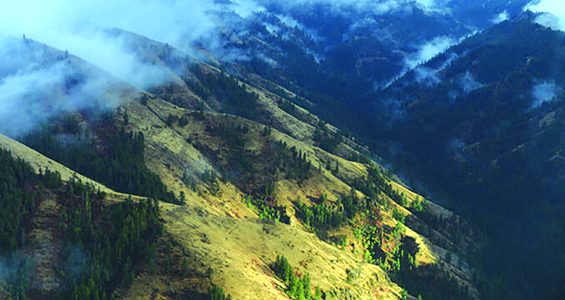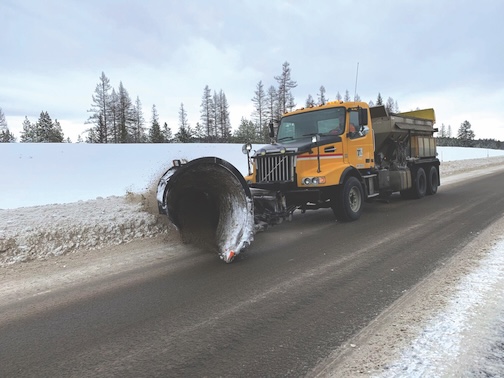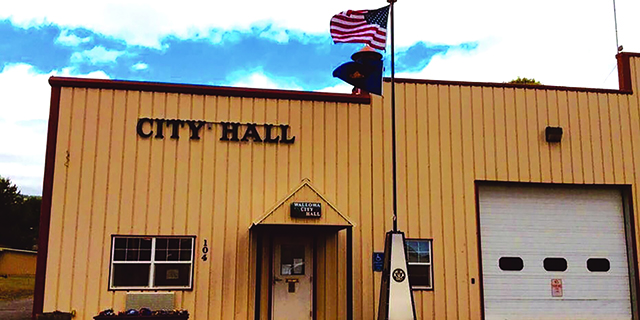AND FURTHERMORE: Dutch oven a world unto itself
Published 4:00 pm Tuesday, March 4, 2014

- <p>Jon Rombach</p>
The secret to award-winning Dutch oven cooking is a secret. I cant tell you. Because nobodys told me. We could interrogate Mike Baird, Stanlynn Daugherty and the chef duo of Nicole Bellows and Larry Davis gold, silver and bronze medalists in that order at Fishtraps recent cast iron cook-off for the Big Read finale last month.
Leigh Dawson, organizer of the cooking competition, has eaten food out of Dutch ovens that I had a part in making during river trips in Hells Canyon. It was awfully nice of her to invite me to the contest, but I was missing vital ingredients I rely heavily on for my outdoor cooking to really work. The outdoors. I start with a Hells Canyon, mix in a day of invigorating adventure, simmer and serve. Another favorite recipe is to take a Grande Ronde, cook something in it and enjoy. An Imnaha is also a wonderful starting point for an outdoor meal, if you can get it fresh.
Trending
Food prepared in the wilds genuinely does seem to taste better than town food. I believe this is explained by the backs of our minds realizing it wouldnt take much to go wrong for the menu to consist of just being hungry. Some of the most-enjoyable meals in my life were hideous concoctions of whatever mixed with might-as-well during backpacking trips. Youre just so grateful to be eating at all that a sorry collection of busted up ramen fragments looks like a t-bone steak.
Then I was introduced to overnight rafting trips where you really do eat t-bone steaks. And you can haul around heavy Dutch ovens and charcoal no backpacker would even consider transporting. A cast iron vessel powered by glowing coals has a definite appeal, probably because it looks like such an unlikely system. If you havent cooked in a Dutch oven before, Ill give you a quick run-down and youll be on your way to winning the Mule Days Dutch oven cook-off this year.
First of all, abbreviate Dutch and oven down to D.O. if you want to sound like a hotshot. Oil the insides of your D.O. before and after each use, and never but ever let a soap molecule get within hailing distance of your cast iron cookware. I think part of the appeal of cast iron for cooking is this seemingly backwards practice of not really washing it. You can, of course, and some people do. But I have witnessed violent reactions from no-soap hardliners when they stumble upon the murder scene of somebody soaping cast iron.
This lack of soaping is supposed to build up seasoning, as I understand it. Apparently the pores of the cast iron absorb the essence of previous meals and magically these tiny food particles no longer qualify as, you know, old food. Its now seasoning. My friend Fargo barely knocks off the high spots from the previous meal and, technically, hes been cooking the same ongoing meal for the 20 years hes been using that same skillet.
Heres some tips. A good rule of thumb for coal placement is six briquettes on the bottom and 18 on the lid. Dutch ovens defy that rule about heat rising and you want most of your hot stuff on top. The properties of the metal somehow allow this reversal of common sense and/or physics.
To bake my famous Wedge Cake, place your Dutch oven on uneven ground. This lets the batter collect on one side and makes cutting equal portions a fun challenge. To avoid this, spin your D.O. every so often or find a truly flat spot. Heres an interesting trick I learned from river guide Brian Murphy: when making upside-down cake or brownies, first lay in a paper towel on the bottom of the Dutch oven, then saturate with cooking oil. This makes an amazingly effective non-stick barrier that peels right off after you flop your finished product upside-down to get it out of the Dutch oven. Sounds crazy but it works.
Trending
Now go oil up that D.O. and treat your loved ones to a batch of wedge brownies.
Jon Rombach is a local columnist for the Chieftain.









